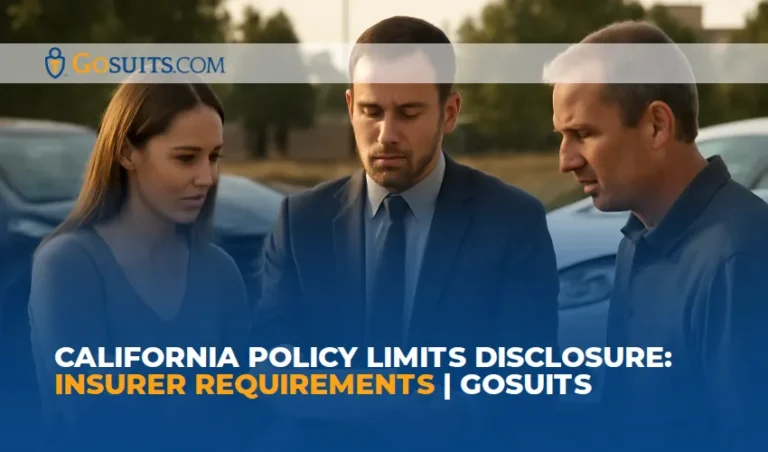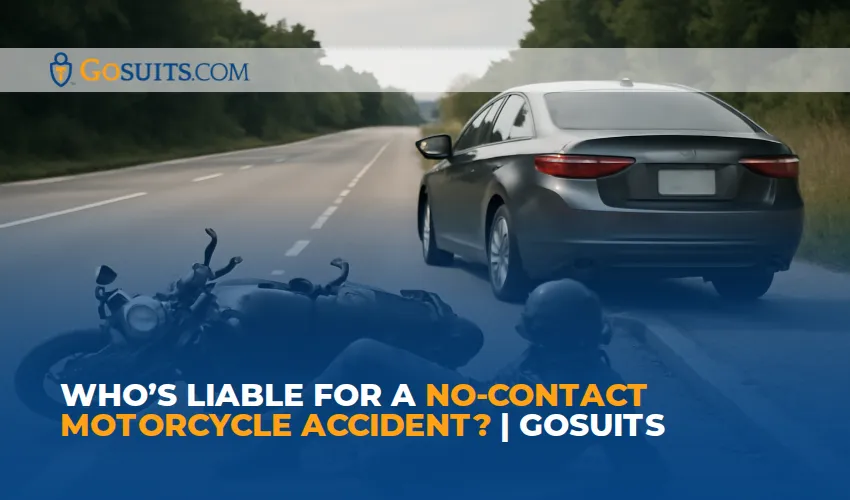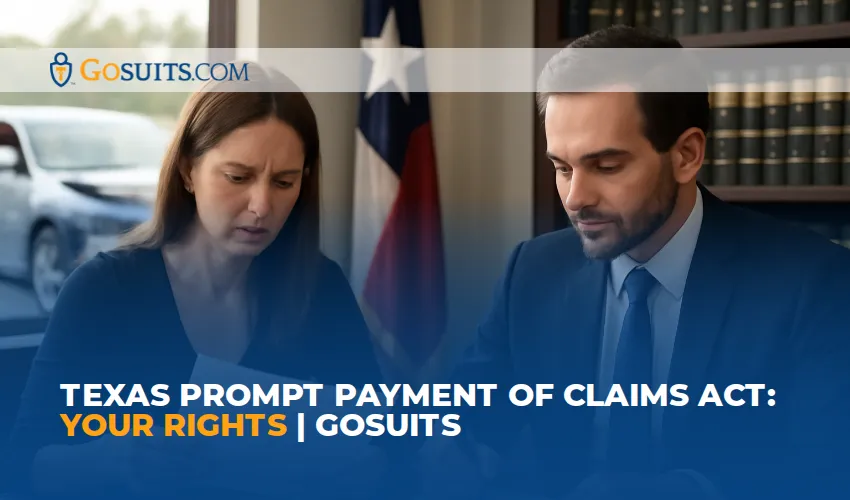- What does “California policy limits disclosure” mean and why does it matter after a crash?
- What must an insurer disclose about policy limits once a California lawsuit is filed?
- Do California insurers have to disclose auto policy limits before a lawsuit?
- What are California’s time-limited demand (TLD) requirements and how do they impact policy limits negotiations?
- How do policy limits disclosure rules differ in first-party claims (UM/UIM and med pay) in California?
- How do you request policy limits from an insurer in California before litigation?
- How should defendants and insurers approach policy limits disclosure requests in California?
- How do policy limits affect California settlement negotiations and wrongful death claims?
- Is liability insurance admissible at trial in California?
- What deadlines apply to policy limits requests and settlement communications?
- What California crash statistics put policy limits in context?
- How do California’s rules compare to other jurisdictions?
- What practical checklist should injured people and families follow on policy limits issues?
- How can GoSuits help with California policy limits and serious injury cases?
- Sources and further reading
What does “California policy limits disclosure” mean and why does it matter after a crash?
If you were hurt in a collision in Los Angeles, San Diego, San Jose, San Francisco, Sacramento, Orange County, Riverside, San Bernardino, Fresno, Oakland, Long Beach, Bakersfield, Anaheim, Santa Ana, Irvine, Pasadena, Glendale, San Mateo County, Contra Costa County, Alameda County, or Ventura County, one of the first questions is whether the at-fault driver’s insurance is large enough to cover your losses. “Policy limits disclosure” refers to when and how an insurer must tell you the maximum amount available under a liability policy. Knowing the limits helps you decide whether to pursue a policy-limits settlement, seek other sources of recovery, or file a lawsuit.
California law has different rules for policy limits disclosure depending on whether a lawsuit has been filed, whether the claim is third-party (asserted against another driver’s policy), or first-party (your own coverage, such as UM/UIM or med pay). Time-limited demands (TLDs) also play a major role in obtaining fair tenders of the limits when liability is clear and injuries are severe.
What must an insurer disclose about policy limits once a California lawsuit is filed?
After a civil case is filed in California, the discovery rules make insurance information, including policy limits, discoverable.
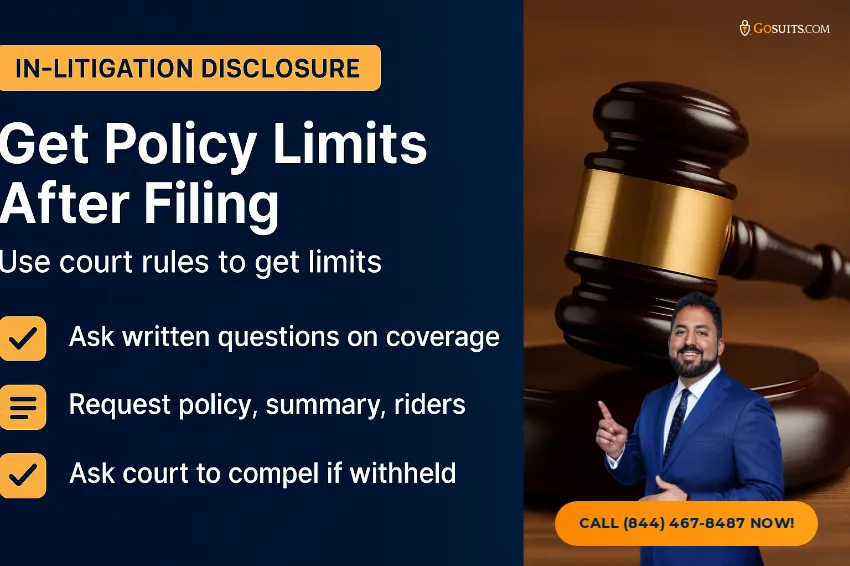
What does Code of Civil Procedure section 2017.210 require?
California Code of Civil Procedure section 2017.210 allows a party to obtain discovery of the existence and contents of any insurance agreement under which an insurer may be liable to satisfy all or part of a judgment. This expressly includes policy limits and any eroding/defense-cost provisions. The statute states that a party may obtain “the existence and contents of any agreement under which any insurance carrier may be liable” for a judgment, which courts routinely interpret to include limits, endorsements, and applicable layers.
Authority: Cal. Code Civ. Proc. § 2017.210.
How is the disclosure obtained in practice during litigation?
- Form interrogatories or special interrogatories asking for insurer name, policy number, policy period, bodily injury and property damage limits, endorsements, and reservations of rights.
- Requests for production for the full certified policy, declarations page, and endorsements.
- Initial disclosures in some courts, or early exchange by stipulation, often streamline this process.
Failure to disclose this information can lead to motions to compel and sanctions. Once disclosed, both sides can evaluate whether settlement within limits is feasible.
Do California insurers have to disclose auto policy limits before a lawsuit?
There is no universal, across-the-board statutory rule requiring pre-litigation disclosure of third-party liability limits in every scenario. That said, California law and claims-handling standards create strong incentives and sometimes obligations to respond in good faith to reasonable requests when a policy-limits settlement is feasible. Two principles are key:
- Duty to settle when warranted: California insurers owe their insureds a duty to make reasonable settlement decisions when liability is clear and the likely damages exceed the policy limits. Classic decisions recognize potential exposure for failing to accept a reasonable policy-limits demand. See, for example, Johansen v. California State Auto. Assn., 15 Cal.3d 9 (1975); Reid v. Mercury Ins. Co., 220 Cal.App.4th 262 (2013); Graciano v. Mercury Gen. Corp., 231 Cal.App.4th 414 (2014).
- Refusal to even ask for consent can be problematic: In Boicourt v. Amex Assurance Co., 78 Cal.App.4th 1390 (2000), the court recognized that a blanket, inflexible refusal to disclose limits without even asking the insured for consent could, in context, support bad-faith exposure if it thwarts an otherwise reasonable chance to settle within limits.
While those are case law principles rather than a single disclosure statute, they shape claims practice statewide and often lead carriers to share limits upon a proper written request that shows why limits information is material to a potential settlement.
Do privacy rules prevent policy limits disclosure?
California’s Insurance Information and Privacy Protection Act restricts disclosure of certain personal information, but it does not bar insurers from communicating essential coverage information to evaluate and settle claims in good faith. When privacy concerns arise, insurers often seek the insured’s consent before disclosing limits, or they redact purely personal data. Claims communications should focus on policy details necessary for settlement, not private, unrelated information.
What if the insurer refuses to disclose limits pre-suit?
- Renew the request with context: Explain liability facts, injury severity, medical bills, and why an informed limits discussion may allow a policy-limits resolution.
- Offer confidentiality: A short confidentiality stipulation focused on settlement negotiations can alleviate privacy concerns.
- Consider a time-limited demand: A compliant California TLD can frame a clear path to resolve the claim within limits, while documenting the reasonableness of the opportunity to settle.
- File suit to compel disclosure: Once litigation starts, CCP § 2017.210 permits discovery of the policy and limits.
What are California’s time-limited demand (TLD) requirements and how do they impact policy limits negotiations?
Effective January 1, 2023, California codified requirements for pre-litigation time-limited demands in bodily injury and wrongful death cases. These statutes detail what must be included in a demand, and the minimum time the insurer must have to accept. They aim to reduce disputes over whether a policy-limits demand was clear and reasonable.
Authority: Cal. Code Civ. Proc. § 999 and § 999.5.
What must be in a compliant California TLD?
While you should review the statutory text for exact language, generally a TLD must:
- Be in writing and labeled as a time-limited demand, with a clear acceptance window.
- Provide essential facts about the loss (date, location), the claimants and injuries, and the insured(s) involved.
- State the material terms, including the amount demanded (often the policy limits) and the release terms.
- Allow at least the statutory minimum time to respond (commonly at least 30 days for email or 33 days for mail; verify current statute).
These rules do not automatically force an insurer to disclose limits. However, by articulating a clear opportunity to resolve the claim for limits, compliant TLDs often bring limits to the forefront and can lead to voluntary disclosure or a tender of limits.
How do TLD statutes interact with bad-faith principles?
The statutes do not change the insurer’s duty to accept a reasonable settlement opportunity within limits when liability is clear and damages exceed limits. They do, however, reduce ambiguity around the clarity and reasonableness of a demand, which can be important if a dispute later arises over whether the insurer failed to settle within limits.
How do policy limits disclosure rules differ in first-party claims (UM/UIM and med pay) in California?
For first-party claims, like uninsured/underinsured motorist (UM/UIM) and medical payments coverage, California’s Fair Claims Settlement Practices Regulations require insurers to promptly communicate the policy benefits and coverages that may apply to a claim. On request, carriers should identify applicable coverages and limits so insureds can make informed decisions.
Authority: 10 CCR § 2695.7 (claims handling standards; insurers must disclose applicable coverages and benefits to first-party claimants).
How do UM/UIM limits come into play?
- UM/UIM limits define the ceiling of what your policy can pay if the at-fault driver is uninsured or underinsured.
- Stacking is not typical in California, so the single per-person and per-accident limits matter greatly.
- Policy copies: As the insured, you can request a certified copy of your policy and declarations page to confirm limits and any offsets.
How do you request policy limits from an insurer in California before litigation?
What information should be included in a pre-litigation policy limits request?
A precise, respectful request increases your chances of a timely response. Consider including:
- Claim identifiers: date, time, and location of loss; claim number; insured’s name; your name and contact information; insurer file handler.
- Liability summary: brief facts, police report number if available, and basis for fault.
- Injury and damages snapshot: injuries, key treatment, medical bills to date, wage loss estimate, and why damages likely exceed minimum limits.
- Purpose and cooperation: explain that limits information is needed to evaluate a policy-limits resolution and avoid unnecessary litigation.
- Confidentiality offer: if requested, offer to keep limits information confidential for settlement evaluation.
- Deadline and delivery method: a reasonable response date and acceptable methods (email and mail).
What might a short sample request letter look like?
Subject: Request for Liability Policy Limits – [Insured Name], Claim #[______], Loss Date [MM/DD/YYYY]
Dear [Adjuster Name],
We represent [Claimant]. We are evaluating a policy-limits settlement to resolve bodily injury claims arising from the [MM/DD/YYYY] collision at [location]. Liability appears clear based on [police report number / facts]. Our client has sustained [summary of injuries], with medical bills to date of approximately [$____], and ongoing care anticipated.
Please confirm the bodily injury and property damage liability limits, policy number, and effective dates for [Insured]. We request this information to evaluate prompt resolution within limits and avoid unnecessary litigation costs. If preferred, we are willing to treat the limits information as confidential and for settlement purposes only.
Kindly respond by [date at least 15–30 days out]. You may send your response via email to [email] and mail to [address]. If you require additional information, please advise promptly.
Sincerely,
[Name], on behalf of [Claimant]
What if the insurer asks for more documentation?
Adjusters sometimes request a police report, medical records, or bills to confirm severity before discussing limits. Providing reasonable proof can accelerate a fair settlement dialogue, particularly if you anticipate sending a time-limited demand for the policy limits.
How should defendants and insurers approach policy limits disclosure requests in California?
What are best practices for insurers handling limits requests?
- Evaluate early: Assess liability and injury severity promptly. If damages likely exceed limits, timely explore a limits resolution.
- Seek insured consent when appropriate: If privacy concerns exist, promptly ask the insured for permission to disclose limits to facilitate settlement.
- Document the file: Keep clear records of requests, responses, and rationales, particularly when considering time-limited demands under CCP § 999.
- Respond within reasonable timeframes: Silence can escalate exposure if a reasonable opportunity to settle within limits is lost.

What should insured defendants know?
If you are the insured defendant, ask your insurer about settlement opportunities and whether disclosing limits may help resolve the claim. Insurers must protect you from excess exposure by reasonably considering policy-limits demands when liability is clear and damages are severe.
How do policy limits affect California settlement negotiations and wrongful death claims?
- Ceiling of recovery from the policy: Liability limits are the maximum available from that carrier absent bad-faith exposure.
- Multiple claimants: In multi-injury or wrongful death cases, per-accident limits must be allocated among all claimants, complicating negotiations.
- Other coverage layers: Umbrella or excess policies may exist and should be investigated once litigation starts under CCP § 2017.210.
How do California minimum auto liability limits factor in?
California’s statutory minimum auto liability limits historically were $15,000 per person, $30,000 per accident for bodily injury, and $5,000 for property damage. Recent legislative changes increased the minimums starting in 2025, reflecting modern medical costs. Reviewing the current statutory minimums is critical when evaluating smaller policies. Many drivers carry only the minimum.
Authority: Cal. Veh. Code § 16056 (financial responsibility minimums; check current version for effective limits).
How do wrongful death claims interact with limits?
- Damages often exceed limits: In fatality cases, even the increased minimum limits are often inadequate. Early limits tenders may be in everyone’s interest.
- Global settlements: With multiple heirs or claimants, insurers may seek a global settlement within the per-accident limit to protect the insured.
- Excess exposure: If a reasonable limits demand is rejected, excess judgments can trigger bad-faith exposure, protecting the injured family’s ability to recover beyond the stated limits.
Is liability insurance admissible at trial in California? Can jurors hear about policy limits at trial?
Generally, no. California Evidence Code section 1155 provides that evidence a person was insured against liability is not admissible to prove negligence or wrongdoing. Limits information is therefore typically excluded from trial to avoid unfair prejudice.
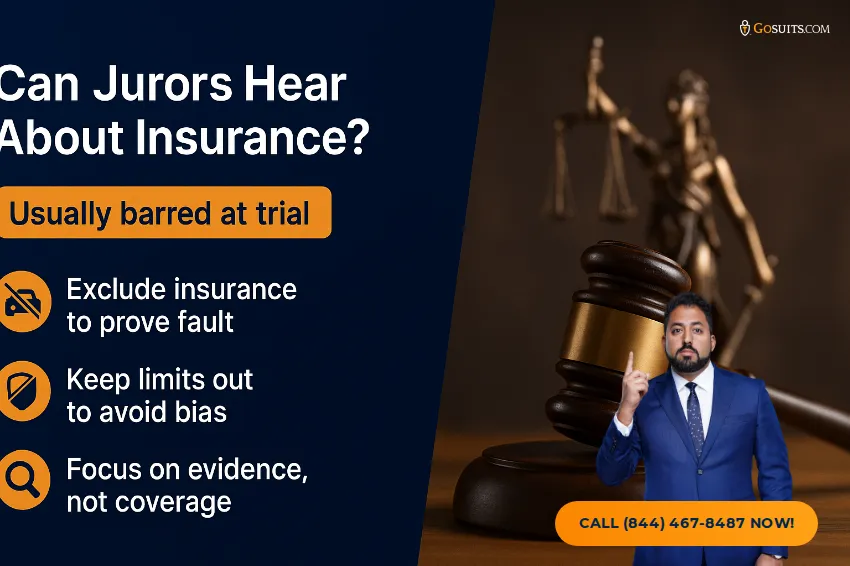
Authority: Cal. Evid. Code § 1155.
What deadlines apply to policy limits requests and settlement communications?
Under California’s time-limited demand statutes, a demand must give the insurer a reasonable and statutorily compliant response window. The statutes set minimum periods depending on delivery method. Always check the current version of CCP § 999 and § 999.5 before sending a demand.
What about statutes of limitation?
Negotiations do not stop the statute of limitations. In California, many auto injury claims must be filed within two years, and claims against public entities have shorter administrative claim deadlines. If the insurer delays or refuses to disclose limits, do not let the filing deadline lapse while waiting for information.
What California crash statistics put policy limits in context?
- High crash volume: California has one of the largest fleets in the nation. See California DMV’s vehicle registration statistics for the number of vehicles in operation statewide, which underscores the volume of claims adjusters handle each year. Source: California DMV Vehicle Registration Statistics.
- Fatalities remain elevated: California recorded more than four thousand traffic fatalities in recent years. The California Office of Traffic Safety maintains current “Quick Stats” summarizing fatalities and key trends. Source: California OTS Quick Stats.
With so many vehicles on the road in Los Angeles, San Diego, San Jose, San Francisco, Sacramento, and across Orange County, Riverside, San Bernardino, and the Central Valley, it is common to encounter at-fault drivers carrying only minimum liability limits, making early evaluation of coverage critical.
How do California’s rules compare to other jurisdictions?
States vary. Some jurisdictions have statutes requiring pre-suit disclosure of auto liability limits upon request; others rely on case law and discovery once suit is filed. California provides robust discovery rights once litigation begins (CCP § 2017.210) and codified detailed pre-suit time-limited demand requirements (§ 999 et seq.), while leaving room for good-faith, case-by-case pre-suit exchanges of limits information.
What about federal cases?
In federal diversity cases seated in California, federal procedural rules apply, but California substantive law on duties to settle and discovery scope of insurance agreements generally informs how limits issues are handled. Federal Rule of Civil Procedure 26(a)(1)(A)(iv) also calls for initial disclosure of insurance agreements that may satisfy a judgment, aligning with the spirit of California’s § 2017.210. See Federal Rules of Civil Procedure.
What practical checklist should injured people and families follow on policy limits issues?
- Gather facts early: Police report number, photos, witness contacts, and medical summaries help justify a limits discussion.
- Send a clear written request: Identify the claim, explain liability and injuries, and ask for BI and PD limits with a reasonable response window.
- Consider a compliant TLD: If liability is clear and damages exceed limits, a properly drafted time-limited demand under § 999 can move the case forward.
- Track deadlines: Calendar the statute of limitations and any government claim deadlines.
- Evaluate all coverages: Check for employer policies, permissive use, resident relative policies, and your own UM/UIM and med pay coverage.
- Escalate if necessary: If pre-suit disclosure stalls and you need the information, file suit and use § 2017.210 to obtain the policy and limits.
Why is legal help important for policy limits issues?
Insurers and defense counsel evaluate policy limits demands carefully because the outcome can determine whether a case resolves within policy or results in an excess exposure fight. Experienced guidance helps frame liability, injuries, and settlement terms clearly and compliantly, while preserving your timeline and options.
How can GoSuits help with California policy limits and serious injury cases?
- Available 24/7: You can reach us any time. We offer an immediate free consultation to talk through liability, injuries, insurance coverages, and whether a policy-limits path is realistic in your case.
- Multilingual support: We provide multilingual customer service. Spanish and Farsi-speaking team members are available 24/7, and we coordinate other languages as needed.
- Direct, consistent contact: We assign a dedicated attorney-led team so you know who is handling your case, and we provide regular, plain-language updates on negotiations, medical documentation, and litigation milestones.
What are our fee policies and cost transparency?
- No win, No Attorney Fees: You pay no attorney fee unless we obtain a recovery for you.
- No hidden administrative fees: We discuss case costs up front and provide clear, written terms so you understand how costs are handled throughout the claim and any lawsuit.
How do our tools and workflow strengthen your claim?
- Proprietary case software: We built internal Personal Injury software for our firm’s use to move cases faster, from investigation to demand drafting, negotiation tracking, filing, and discovery, so we can outpace typical claim delays and keep pressure on insurers.
- Evidence-driven demands: Our demands align with California’s time-limited demand requirements, highlight liability proof, medical support, and damages modeling, and are designed to prompt fair evaluation of policy limits.
- Litigation-ready approach: If negotiations stall, we prepare pleadings and discovery promptly to obtain insurance agreements and limits under CCP § 2017.210.

What experience and track record do we bring to severe injury cases?
- 30 years of combined experience: Our attorneys have spent decades litigating injury cases involving contested liability and limited policies.
- 1,000+ litigated matters: We have handled more than a thousand cases, with settlement and verdict results published on our website. See representative matters: gosuits.com/prior-cases.
- Complex injury litigation: In product liability, 18-wheeler collisions, brain and spinal injury cases, and other complex matters, we retain qualified experts within the state to prove liability and damages when needed.
- Multi-state litigation: We litigate severe injury and complex cases in Texas, California, and Illinois, coordinating local rules and court practices.
- Awards and recognition:
- #1 settlements and verdicts across multiple U.S. counties according to TopVerdict.
- Top 100 Settlement in Texas.
- Sean Chalaki named Top 40 Under 40 by National Trial Lawyers.
- Recognized by Best Lawyers in 2023, 2024, 2025.
- Selected to Super Lawyers since 2021.
How do we add value in policy limits cases in California?
- Early coverage mapping: We identify all potential policies, including permissive use, household, employer, and any umbrella layers, and we move quickly to secure limits information via structured requests and, if necessary, litigation tools.
- Strategic time-limited demands: We tailor TLDs to comply with CCP § 999 and present a clear, reasonable opportunity to settle within limits.
- Wrongful death coordination: In fatality cases, we coordinate multiple claimants, open communications with defense and carriers, and structure global resolution proposals when it serves the family’s goals.
- Trial leverage: If a fair limits resolution is denied, we pursue litigation aggressively, preserve bad-faith issues where appropriate, and keep the case moving toward a result.
Where can we meet you and how fast can we help?
- Statewide availability: We meet clients across California, including Los Angeles, San Diego, the Bay Area, Sacramento, Orange County, Inland Empire, and the Central Valley. Meetings can be virtual or in-person by appointment.
- Rapid intake and action: An attorney and staff are available at our locations 24/7 to begin gathering records, contacting insurers, and protecting your deadlines immediately after you contact us.
We are a client-focused firm, not a volume practice. Our goal is to provide attentive, high-quality legal services tailored to your situation, so you understand your options, from pursuing a policy-limits settlement to filing suit and obtaining full insurance disclosures.
Sources and further reading
- California Code of Civil Procedure § 2017.210 (Insurance agreements discoverable, including limits)
- California Code of Civil Procedure § 999 (Time-limited demands) and § 999.5
- California Vehicle Code § 16056 (Financial responsibility minimums)
- California Evidence Code § 1155 (Insurance inadmissible to prove negligence)
- California Fair Claims Settlement Practices Regulations, 10 CCR § 2695.7
- Federal Rules of Civil Procedure 26(a)(1)(A)(iv) (Insurance agreements disclosure)
- California DMV – Vehicle Registration Statistics
- California Office of Traffic Safety – Quick Stats
- Cal. Supreme Court and Court of Appeal cases on duty to settle and policy limits demands (e.g., Johansen v. CSAA, 15 Cal.3d 9; Reid v. Mercury Ins. Co., 220 Cal.App.4th 262; Graciano v. Mercury Gen. Corp., 231 Cal.App.4th 414; Boicourt v. Amex Assurance Co., 78 Cal.App.4th 1390). You can find these cases using Google Scholar.
